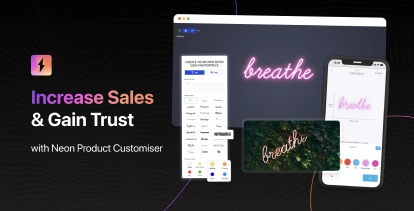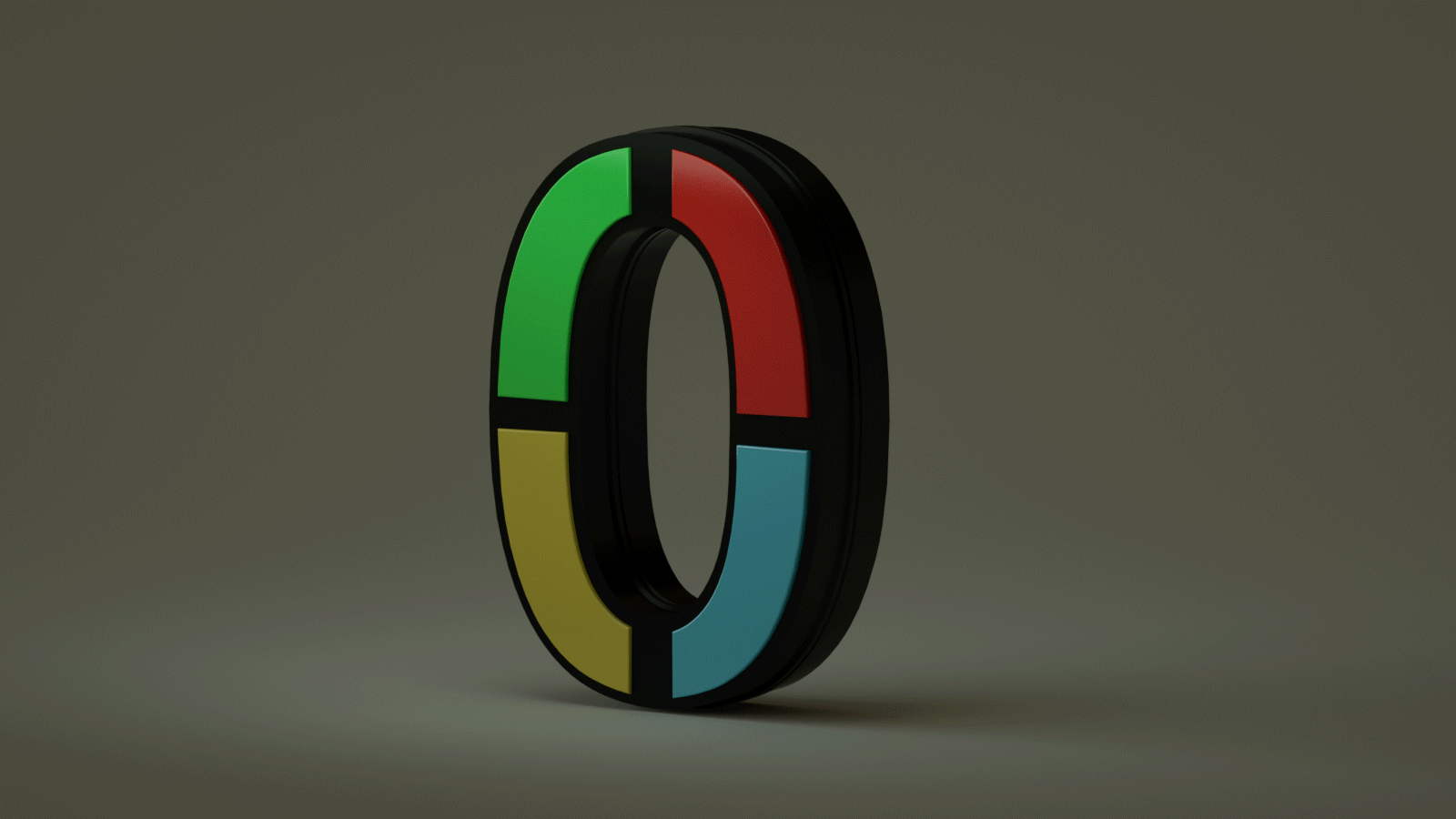In the realm of contemporary signage, acrylic letters stand out as versatile and visually appealing components that have gained widespread popularity.
The primary purpose of this blog is to serve as a comprehensive educational resource for individuals involved in or passionate about acrylic letter signs. **We’ll explore not only their design intricacies but also the crucial facets of installation and maintenance. **
By understanding the unique attributes of acrylic letters and their unparalleled contribution to signage, both store owners specializing in acrylic letter signs and passionate enthusiasts can gain valuable insights into harnessing the full potential of this dynamic signage solution.
What are acrylic letters?
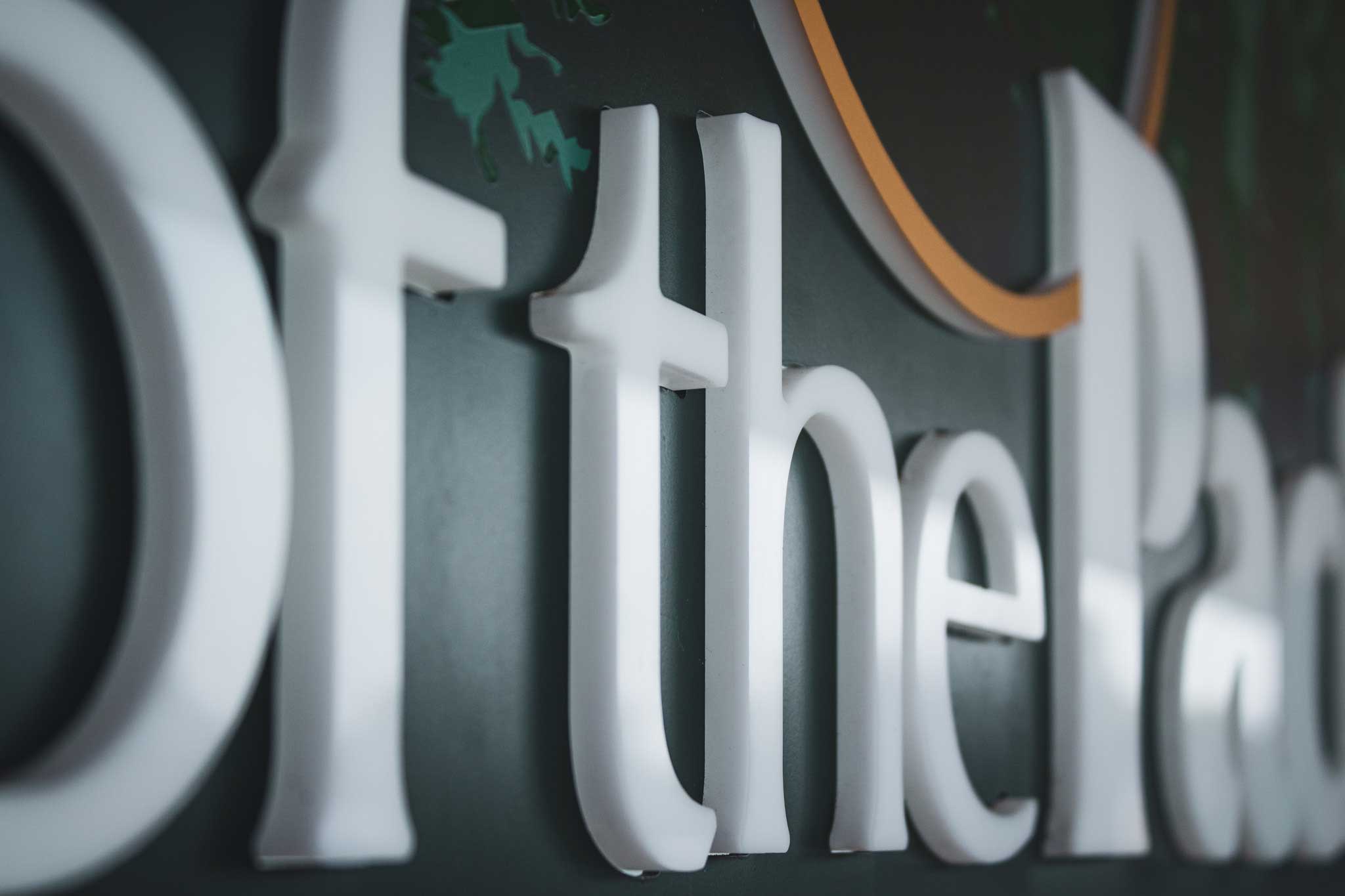
**Acrylic letters, at their core, are a distinct category of signage elements crafted from acrylic material, a type of plastic renowned for its clarity, resilience, and versatility. **
The very essence of acrylic letters lies in their transparent and glass-like appearance, achieved through the precision crafting of acrylic material. This thermoplastic nature allows for intricate fabrication processes, enabling the creation of letters with precise shapes and intricate designs.
The composition of acrylic letters typically involves the careful manipulation of acrylic sheets through cutting, molding, or laser-cutting techniques.
These processes allow for the creation of letters in various sizes, fonts, and styles, adding a level of customization that sets acrylic letters apart in the signage landscape.
Understanding acrylic material
1. What is acrylic material?
Acrylic, aka Plexiglass, is officially known as polymethyl methacrylate (PMMA). It is recognized by various names such as Lucite, Acrylic Glass, or Acrylite. It stands as a transparent thermoplastic homopolymer renowned for its exceptional qualities.
**Frequently employed as a substitute for traditional glass, this material boasts superior strength, clarity, and lightweight. **Acrylic is available in sheets, rods, and tubes. It has an extensive array of colors and opacities, catering to diverse aesthetic preferences.
2. Advantages of using acrylic for signs
One of its key advantages lies in its high impact resistance, rendering it less prone to breakage compared to glass.
Boasting an optical clarity that allows the transmission of 93% of visible light, acrylic has found widespread use in applications requiring transparency.
Notably lightweight, it weighs only half as much as glass of equivalent thickness. Furthermore, its weatherproof and UV-resistant attributes make it well-suited for outdoor applications.
The ease with which acrylic can be fabricated and shaped adds to its versatility, making it a favored material across a broad spectrum of industries and creative endeavors.
3. Different types of acrylic material for letter signs
Manufacturing process: cast acrylic vs. extruded acrylic
At the forefront of this exploration is the dichotomy between cast acrylic and extruded acrylic, two distinct variants that dominate the acrylic material landscape.
Cast acrylic is renowned for its exceptional clarity and optical quality. It is produced through a meticulous casting process, resulting in a material with minimal internal stress.
This makes it a prime choice for applications where visual clarity and precision are paramount, such as high-end signage and displays.
On the other hand, extruded acrylic undergoes a different manufacturing process, where a continuous production method results in a material with inherent variations in thickness.
While extruded acrylic may not boast the same optical perfection as its cast counterpart, it compensates with cost-effectiveness and a broader range of color options.
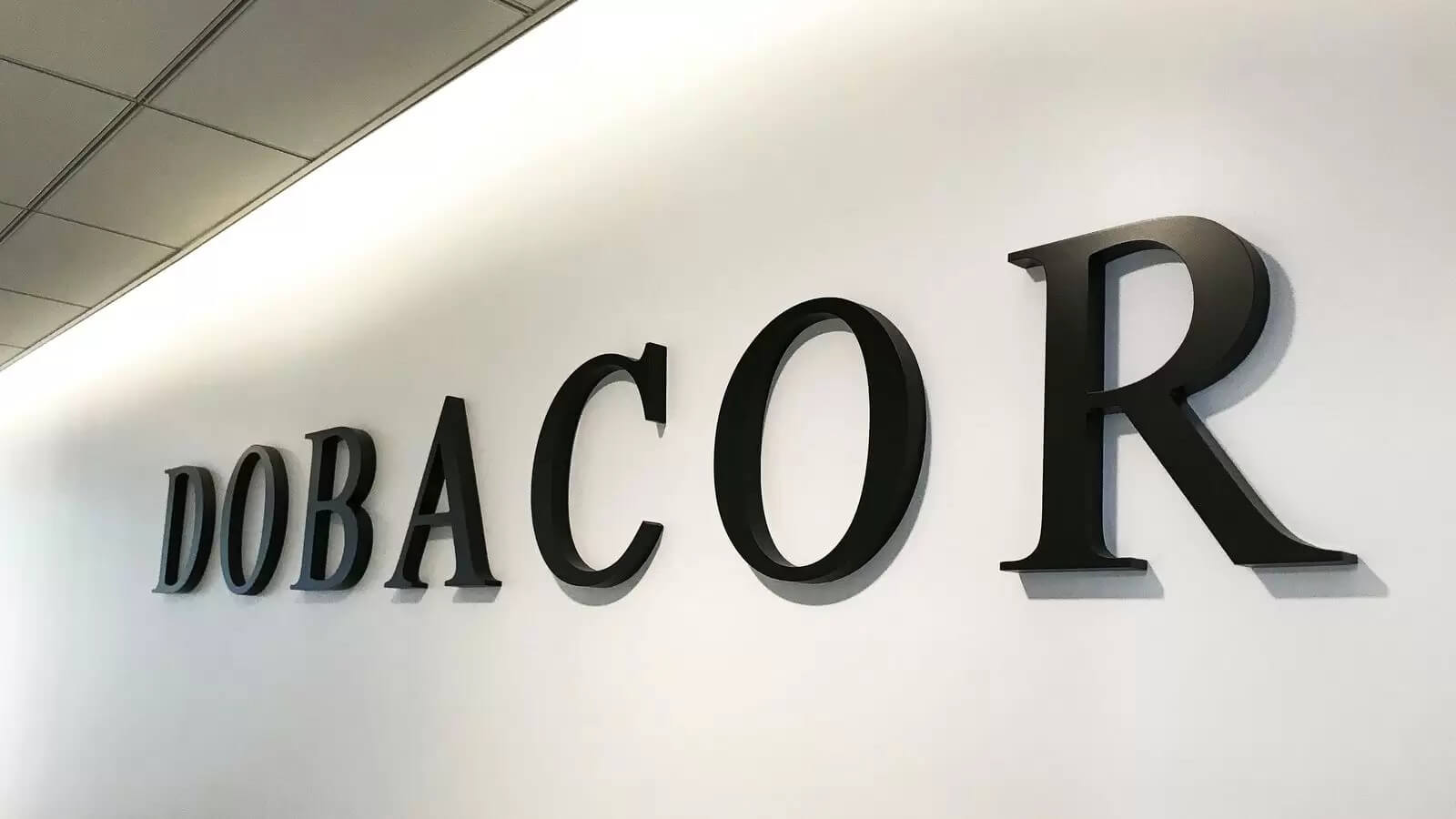
Special properties: transparent, translucent, and opaque acrylic
The spectrum of acrylic materials further unfolds with a nuanced exploration of transparency levels.
Transparent acrylic, as the name suggests, allows light to pass through with minimal distortion. This creates a visually striking effect that is particularly well-suited for applications where luminosity is a key design element.
This variant finds its niche in backlit signage, where the interplay of light and transparency enhances the overall visual allure.
In contrast, translucent acrylic strikes a balance between transparency and opacity. This diffuses light to achieve a softer, more subdued illumination. This type of acrylic is often favored in scenarios where a more muted and sophisticated aesthetic is desired.
Opaque acrylic, on the other hand, completely obstructs the passage of light. It offers a solid and bold visual presence. This characteristic makes it ideal for applications where the emphasis is on the solidity and prominence of the signage.
Also, there are many other variations or combinations of these properties. So, while there are only two main manufacturing processes, the diversity of special properties available makes a huge number of acrylic plastics.
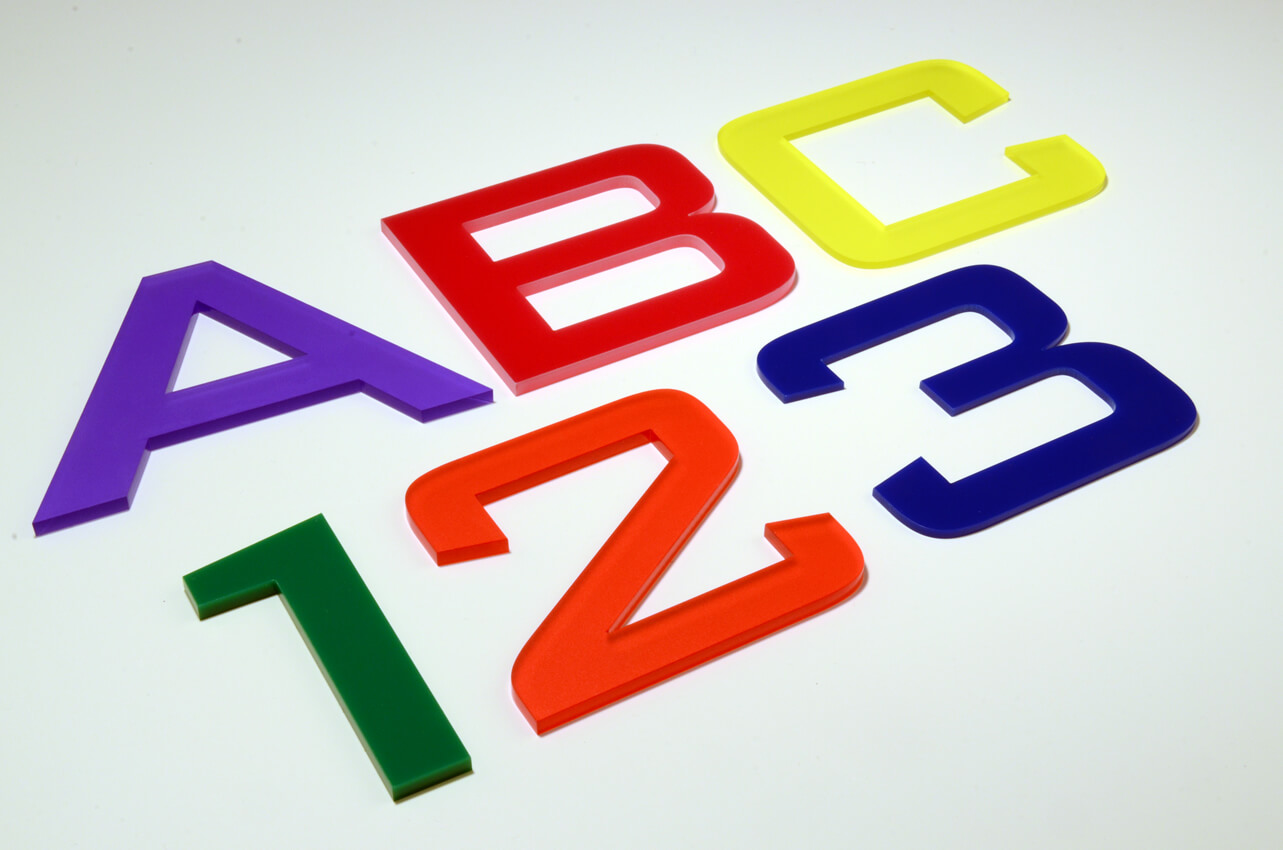
4. Comparisons with other signage materials
Acrylic vs. metal letters
The dichotomy between acrylic and metal letters encapsulates a clash of aesthetics, durability, and practical considerations.
Acrylic, with its lightweight and versatile nature, offers a sleek and modern appearance that appeals to a wide range of applications.
On the other hand, metal letters exude a sense of timelessness and solidity. This makes them a popular choice for projects where a more industrial or classic aesthetic is desired.
When it comes to durability, both materials have their strengths.
Metal letters are renowned for their resilience against the elements and potential impact, rendering them suitable for outdoor signage subjected to harsh weather conditions.
Acrylic, while not as rugged as metal, compensates with ease of fabrication and the ability to achieve intricate designs.
Acrylic vs. wood letters
The comparison between acrylic and wood letters delves into the realms of tradition, warmth, and customization.
Wood letters, with their natural aesthetic and tactile appeal, evoke a sense of authenticity that resonates in certain settings. Acrylic, on the other hand, embraces a contemporary vibe, offering a clean and polished look that suits modern design preferences.
While wood letters have a timeless charm, they are more susceptible to environmental factors such as moisture and insects.
Acrylic, being a synthetic material, stands resilient against such challenges, making it a preferred choice for longevity and low-maintenance applications.
Advantages of choosing acrylic letters for signage
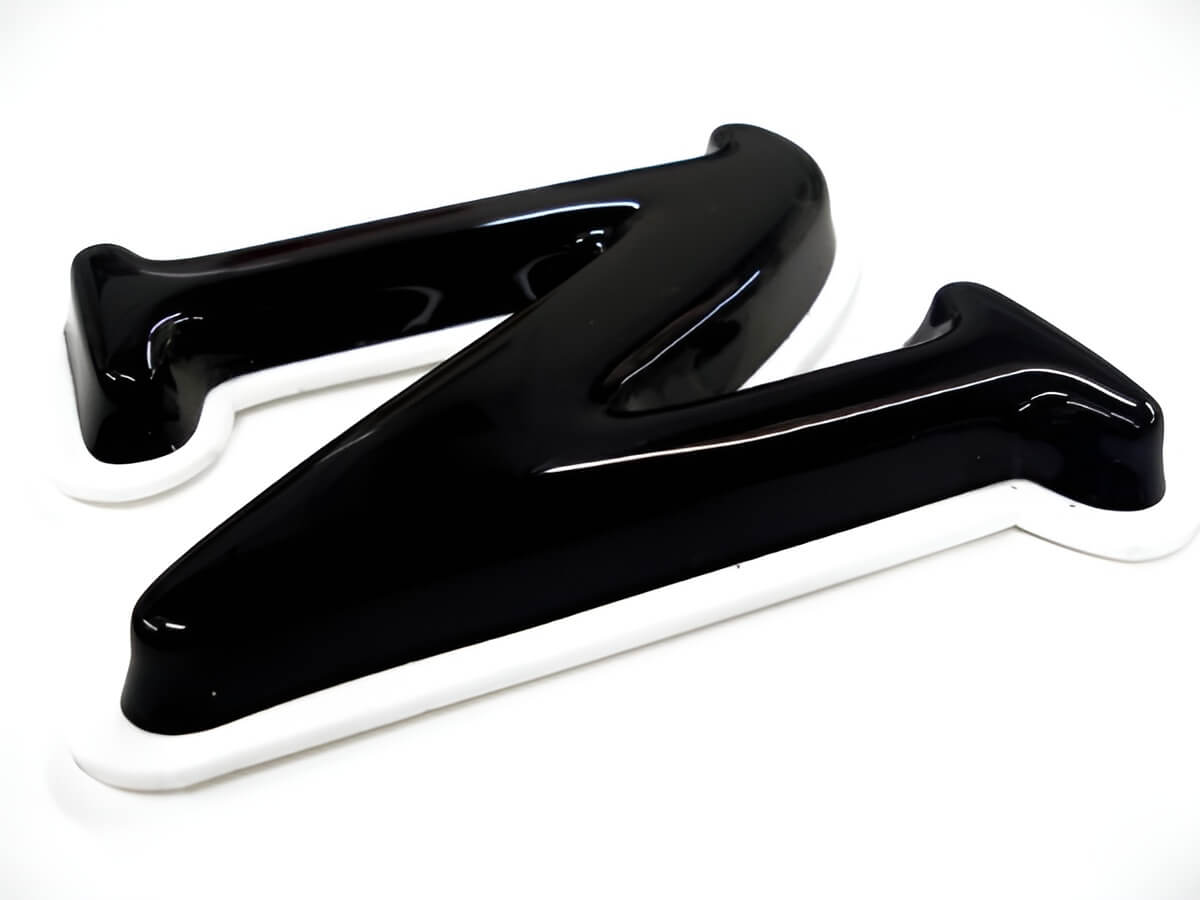
Image source: signsplusnw.com
1. Durability
Durability stands as a cornerstone advantage when opting for acrylic letters in signage. These letters boast resilience that withstands the test of time and environmental factors.
Unlike some other materials that may succumb to wear and tear, acrylic letters maintain their structural integrity, ensuring a lasting impression for businesses and establishments alike.
2. Weather resistance
The unpredictable nature of weather can pose a significant challenge to signage, making weather resistance a pivotal advantage of acrylic letters.
The inherent properties of acrylic material render these letters resistant to adverse weather conditions, including rain, snow, and UV exposure. This resistance not only ensures the sustained visual appeal of the signage but also speaks to the practicality of acrylic letters for outdoor applications.
Businesses seeking signage solutions capable of withstanding diverse weather challenges find a reliable ally in acrylic letters, ensuring that their messaging remains vibrant and visible regardless of the external elements.
3. Versatility
Versatility emerges as a defining characteristic that sets acrylic letters apart in the signage landscape. The malleability of acrylic material allows for the creation of letters in various sizes, fonts, and styles, catering to diverse design preferences.
Whether businesses aim for a sleek and modern aesthetic or a more traditional look, acrylic letters provide a versatile canvas that adapts to different branding needs.
This adaptability extends to both indoor and outdoor settings, making acrylic letters a versatile choice for a wide array of signage applications.
4. Aesthetic appeal
One of the hallmark advantages of opting for acrylic letters in signage lies in their unparalleled aesthetic appeal. Acrylic, with its smooth surface and ability to transmit light, lends itself to creating signage with a clean, modern, and visually striking appearance.
The material’s inherent clarity allows for vibrant color reproduction and crisp lettering, resulting in signage that captivates attention and communicates messages with clarity.
5. Cost-effectiveness
In the intricate balance of quality and affordability, acrylic letters emerge as a cost-effective solution for signage needs.
The material’s economic advantages stem from various factors, including its lightweight nature, ease of fabrication, and a broad spectrum of color options.
Acrylic’s lightweight properties not only simplify the installation process but also contribute to cost savings in terms of transportation and handling.
The average price of a small, non-illuminated acrylic letter sign is around $200–$300. Larger illuminated signs can range from $1,000 to $3,000 or more. However, raw material prices can fluctuate significantly.
Applications in signage
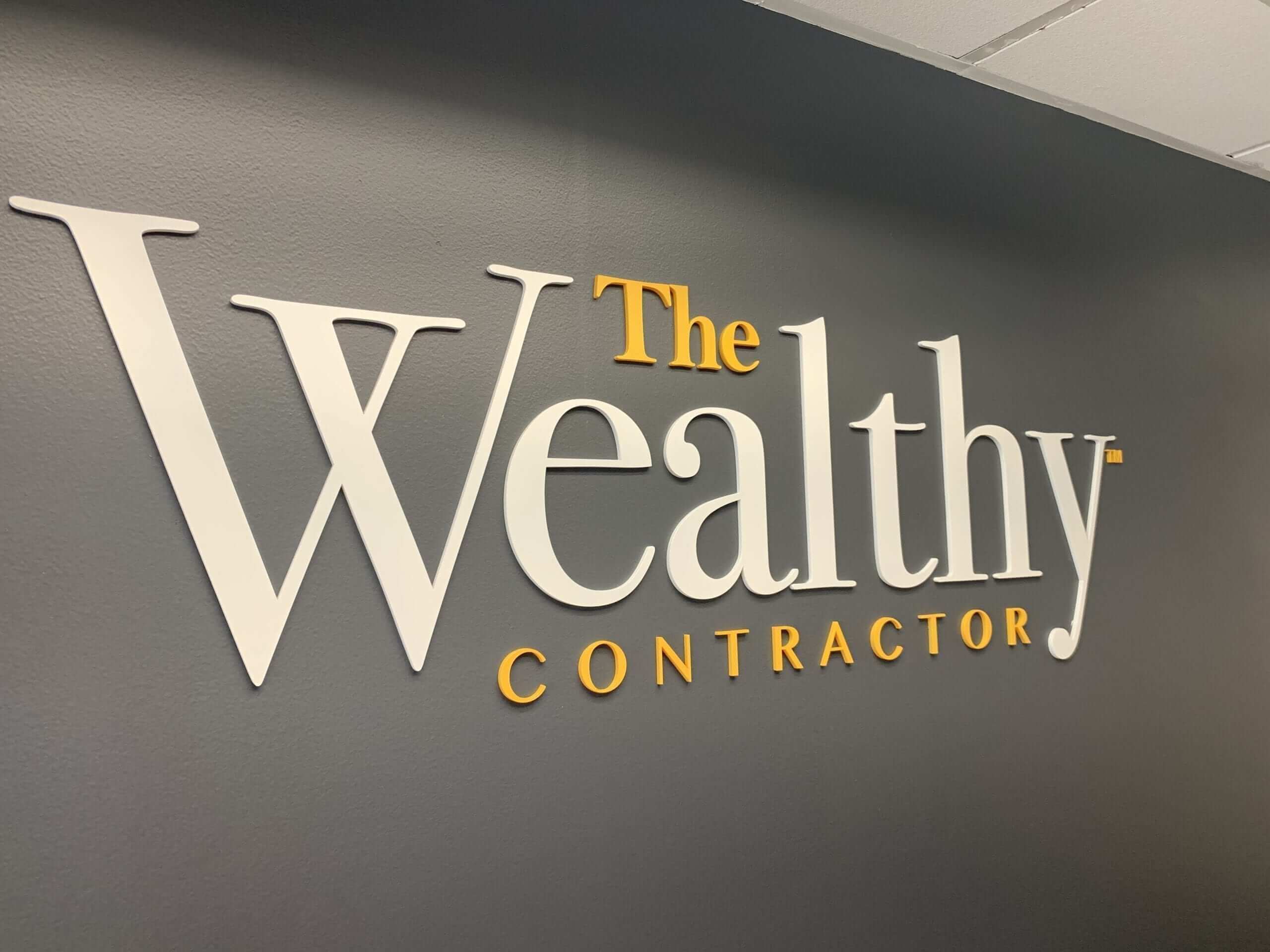
Image source: frontsigns.com
Outdoor signage
The adaptability of acrylic letters shines prominently in the realm of outdoor signage. Whether adorning the facades of storefronts, guiding visitors to landmarks, or enhancing the visibility of business names, acrylic letters prove to be resilient and eye-catching.
The durability of acrylic material makes it well-suited to brave the elements, ensuring that outdoor signage retains its clarity and vibrancy over time.
Indoor signage
Indoor environments benefit equally from the versatility of acrylic letters. Beyond their aesthetic charm, acrylic letters offer a clean and polished look that aligns seamlessly with interior design aesthetics.
Whether used for wayfinding in office complexes, adorning the walls of retail spaces, or creating impactful lobby signage, acrylic letters contribute to a cohesive and visually appealing indoor atmosphere.
Which industry mostly uses acrylic letter signage?
The diverse adaptability of acrylic letter signage transcends industry boundaries, finding resonance in a myriad of sectors.
- Retail establishments, with their emphasis on creating enticing storefronts, frequently utilize acrylic letters to showcase brand names and promotions.
- Similarly, the hospitality sector leverages acrylic letters to guide guests seamlessly through hotels and resorts.
- Additionally, the healthcare industry employs acrylic letter signage for clear wayfinding in medical facilities, ensuring a conducive and organized environment for patients and visitors.
Types of acrylic letter signs
1. Flat-cut acrylic letters

Image source: cutplasticsheeting.co.uk
Flat-cut acrylic letters represent a classic and versatile choice in signage design. Crafted through precision cutting techniques, these letters boast a clean and straightforward aesthetic.
Their simplicity, however, does not compromise on visual impact. Flat-cut acrylic letters are characterized by sharp edges and are available in an extensive array of fonts and sizes.
This versatility makes them suitable for a wide range of applications, from corporate branding to interior signage. The straightforward yet professional appearance of flat-cut acrylic letters ensures they seamlessly integrate into diverse design contexts.
2. Molded acrylic letters
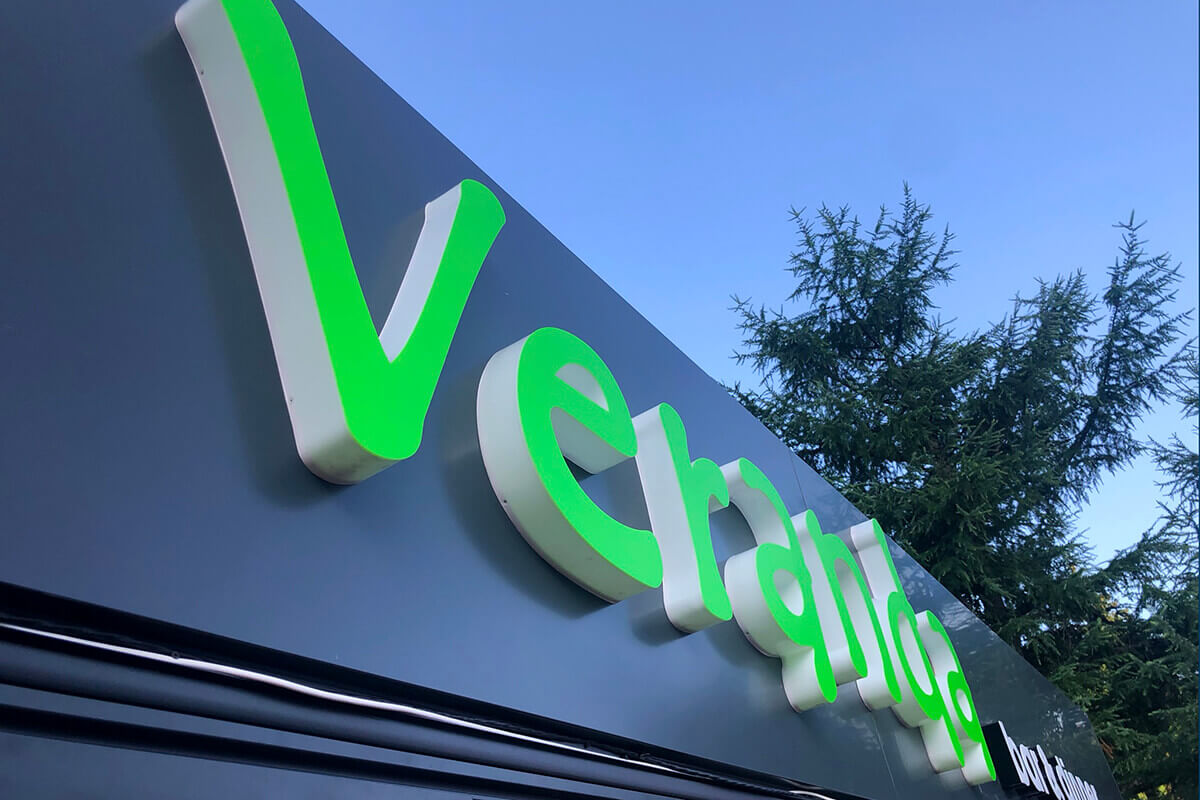
Image source: impactsignsolutions.co.uk
In the pursuit of tactile effect, molded acrylic letters come to the forefront.
These letters are crafted by heating the acrylic sheet and forming it into specific shapes and contours. The result is a set of letters with depth and dimensionality, adding a sense of substance to the signage.
Molded acrylic letters are particularly favored in scenarios where a more pronounced and visually dynamic presence is desired.
Their versatility in shape and design allows for the creation of eye-catching and customized signage that stands out in both indoor and outdoor settings.
3. Laser-cut acrylic letters
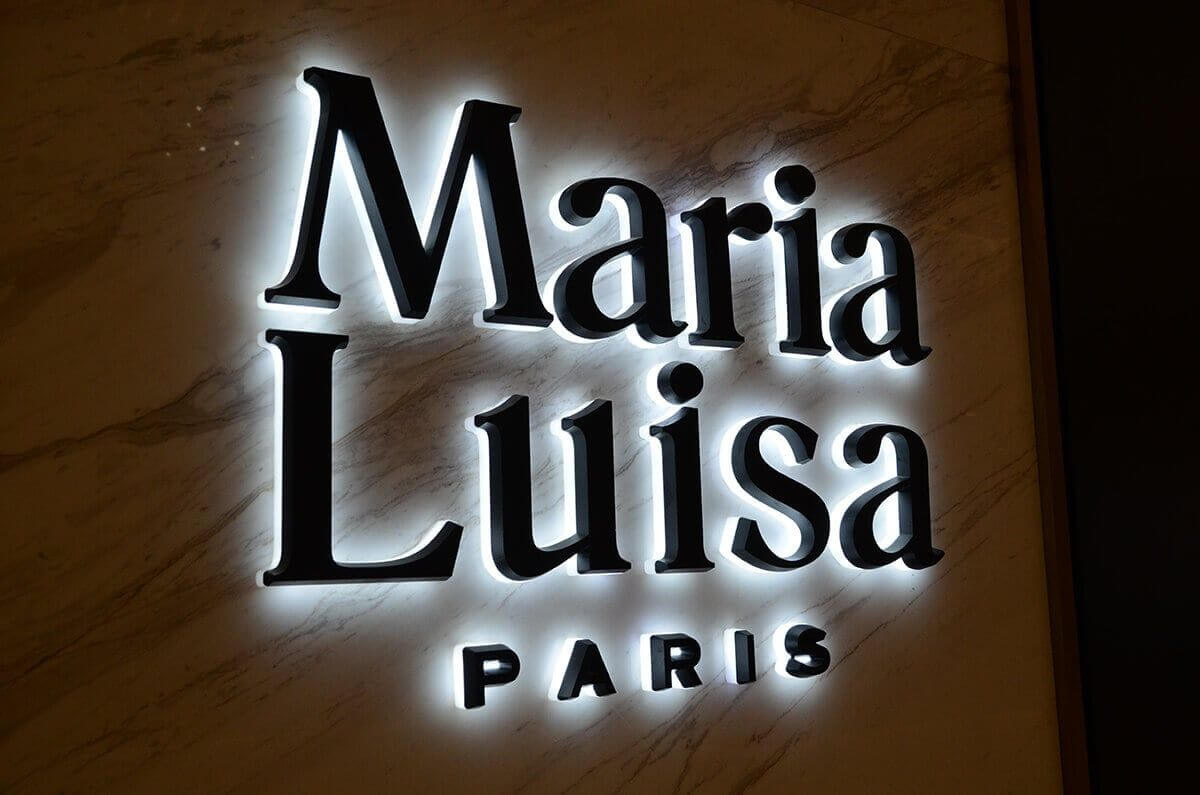
Image source: titansofprint.com
The precision and intricacy achievable through laser-cutting technology give rise to a distinct category of acrylic letters.
Laser-cut acrylic letters are crafted with meticulous accuracy, allowing for intricate detailing and fine lines that may be challenging to achieve through traditional cutting methods.
This type of acrylic lettering is characterized by its sharp edges and the ability to reproduce intricate designs with utmost precision.
Whether used for intricate logos or decorative elements, laser-cut acrylic letters add a touch of sophistication to signage applications, making them an ideal choice for projects that demand precision and intricate detailing.
4. 3D acrylic letters
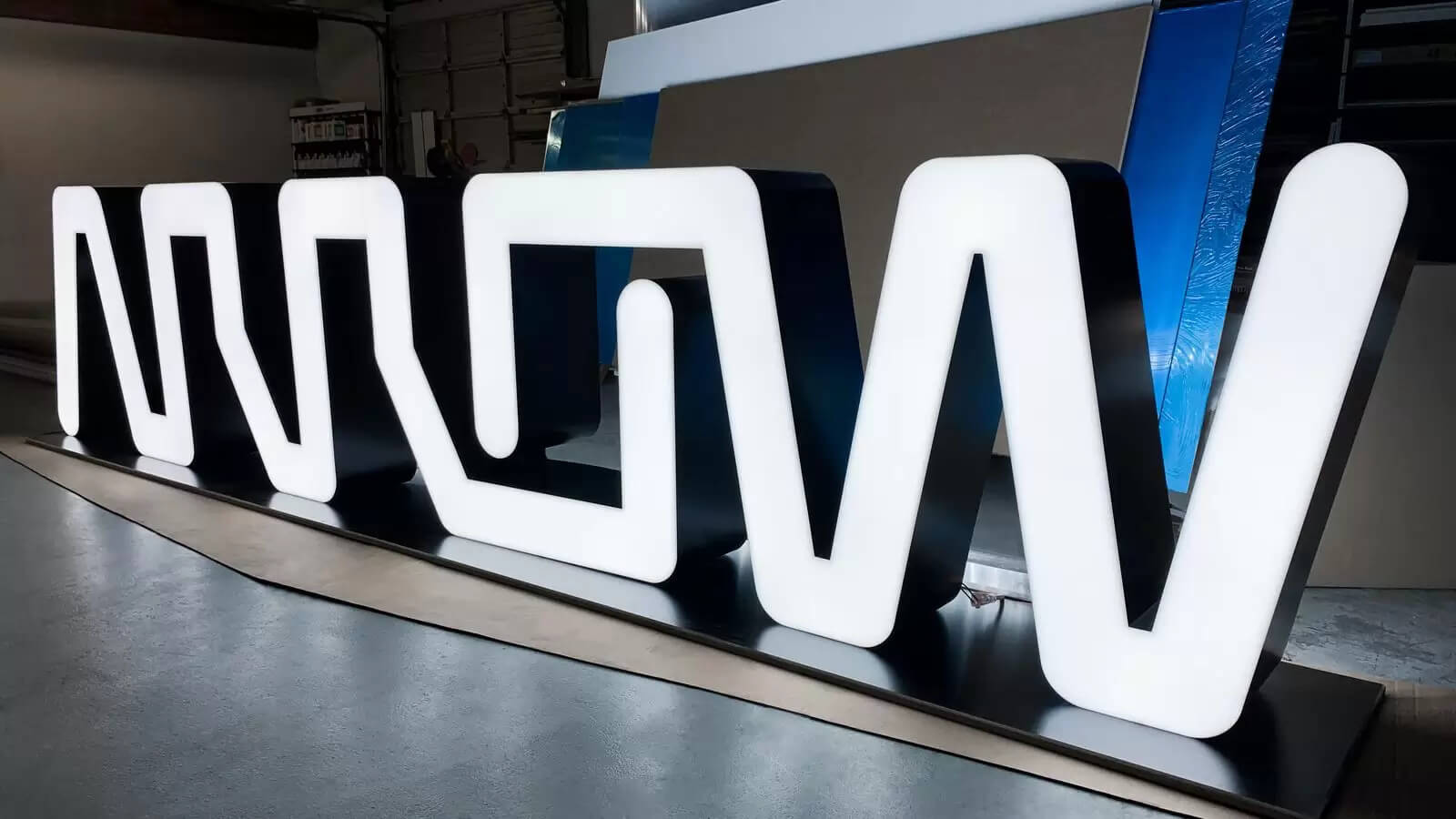
Image source: whiteclouds.com
Stepping into the realm of dimensionality, 3D acrylic letters offer a tactile and visually striking presence. These letters are crafted to stand out from the signage surface, creating a three-dimensional effect that captures attention and adds a sense of depth.
The process involves cutting or molding acrylic into individual letters, which are then mounted with spacers to create the desired projection.
3D acrylic letters are versatile, allowing for a range of sizes and styles, making them suitable for diverse applications such as interior branding, lobby signage, or event displays.
5. Acrylic channel letters
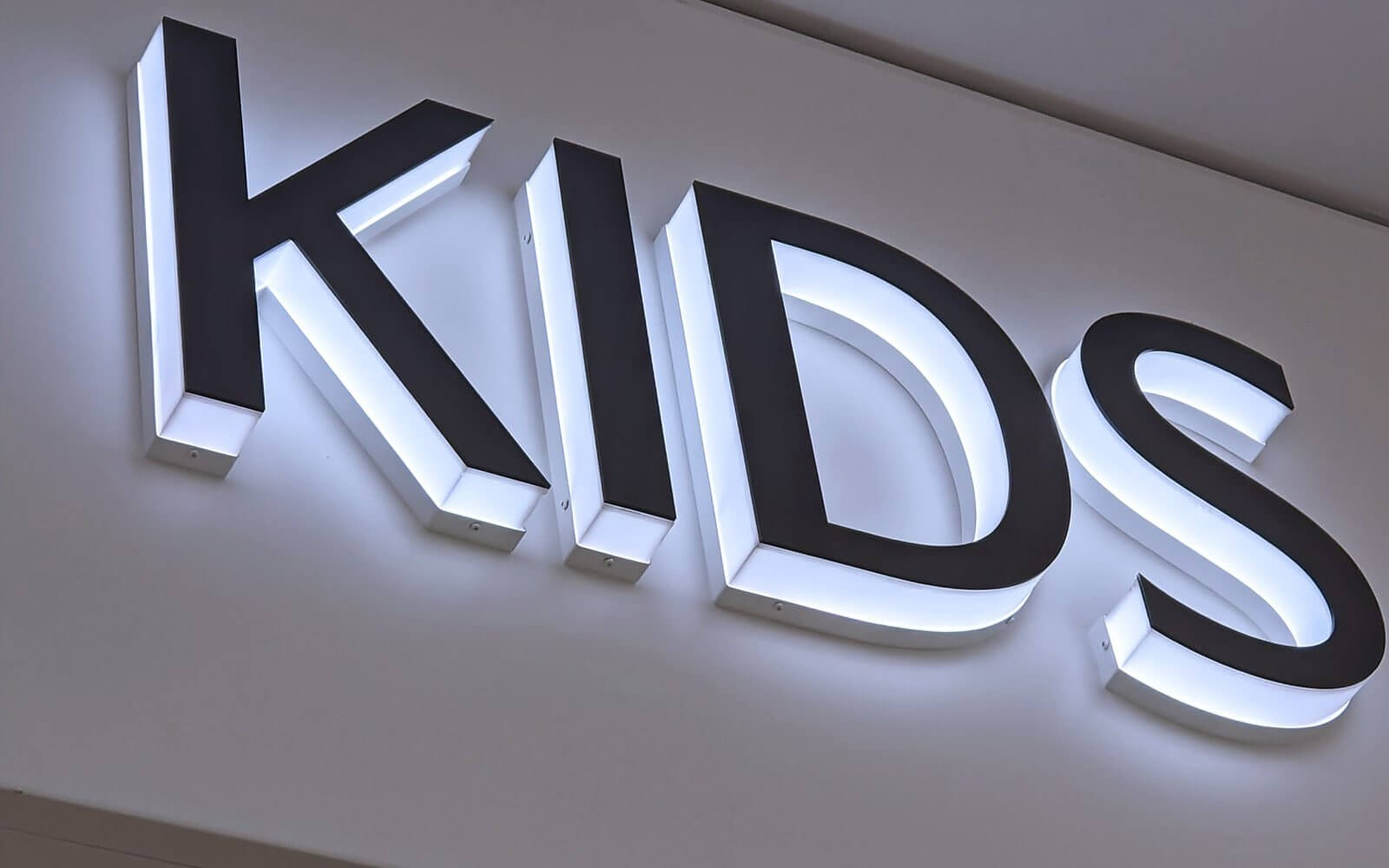
Image source: mediadesign.bg
Acrylic channel letters represent a dynamic evolution in signage aesthetics, introducing depth and illumination into the visual narrative. These letters are crafted with a hollow channel, typically formed by the integration of acrylic faces and metal returns.
The hollow channel allows for the insertion of LED modules, creating a captivating illuminated effect. Acrylic channel letters are often employed in storefronts and outdoor signage where visibility and visual impact are paramount.
The play of light and shadow within the channels adds a layer of sophistication, making them an eye-catching choice for businesses seeking to enhance their brand presence.
The art of customization in acrylic letter signage
The allure of acrylic letters in signage not only lies in their inherent visual appeal but also in the extensive customization options they offer.
1. Lighting options
a. Backlit acrylic letters
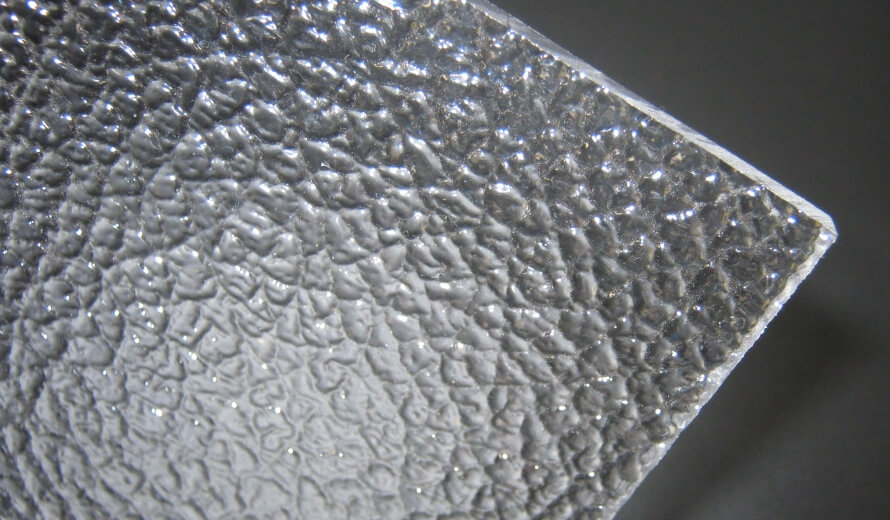
Image source: pinterest.com
Backlit acrylic letters usher in a captivating play of light and shadow, elevating the visual impact of signage. The strategic placement of illumination behind the acrylic creates a halo effect, accentuating the letters and ensuring visibility even in low-light conditions.
This option not only enhances the aesthetic appeal but also serves as a practical solution for businesses looking to maintain visibility during the night, ensuring their messages are conveyed round the clock.
b. Front-lit acrylic letters
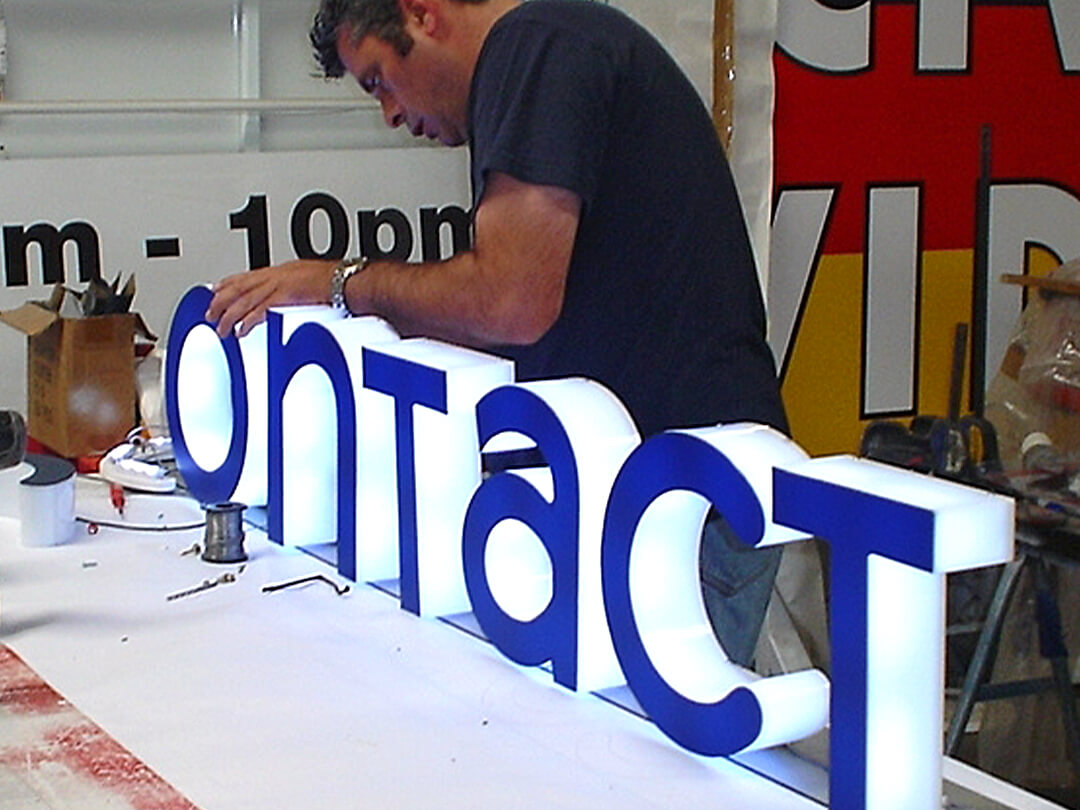
Image source: frontsigns.com
In contrast, front-lit acrylic letters focus on illuminating the front surface of the letters, resulting in a bold and vibrant display. This technique is particularly effective for creating signage that demands attention in well-lit environments.
Front-lit acrylic letters offer a dynamic and vivid presence, making them a popular choice for businesses seeking signage solutions that emanate brightness and clarity.
c. Edge-lit acrylic letters
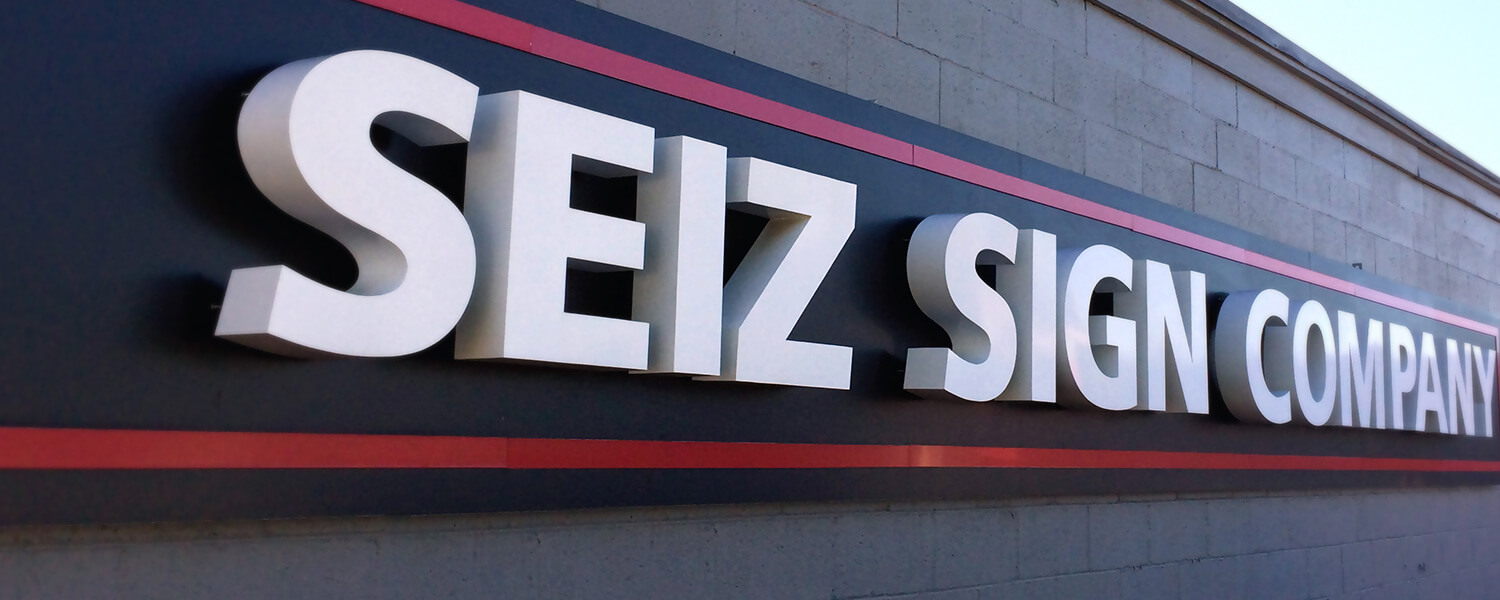
Image source: squarespace-cdn.com
Edge-lit acrylic letters introduce a modern and sophisticated touch to signage. Illumination is strategically embedded along the edges of the letters, creating a subtle yet impactful glow.
This technique imparts a sense of depth and dimension to the letters, making them visually dynamic. Edge-lit acrylic letters find their niche in contemporary settings, adding a touch of elegance to the overall signage aesthetic.
2. Finishes and textures
Matte vs. glossy finishes
The choice between matte and glossy finishes allows for further customization, catering to different visual preferences and brand aesthetics.
- Matte finishes offer a subdued and understated elegance, reducing glare and ensuring a smooth appearance.
- On the other hand, glossy finishes impart a reflective sheen, adding a touch of sophistication and modernity.
The selection between matte and glossy finishes becomes a crucial aspect of tailoring acrylic letters to align seamlessly with the desired visual identity.
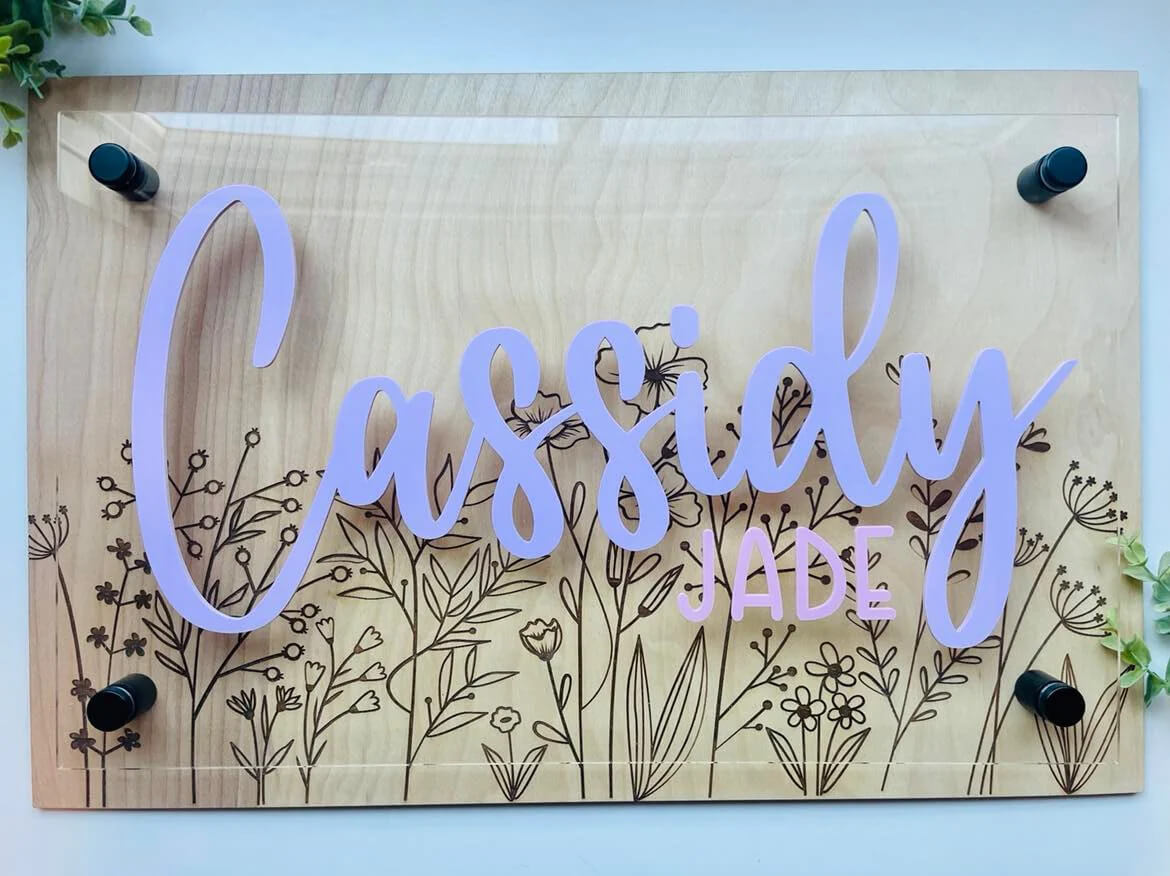
Textured acrylic options
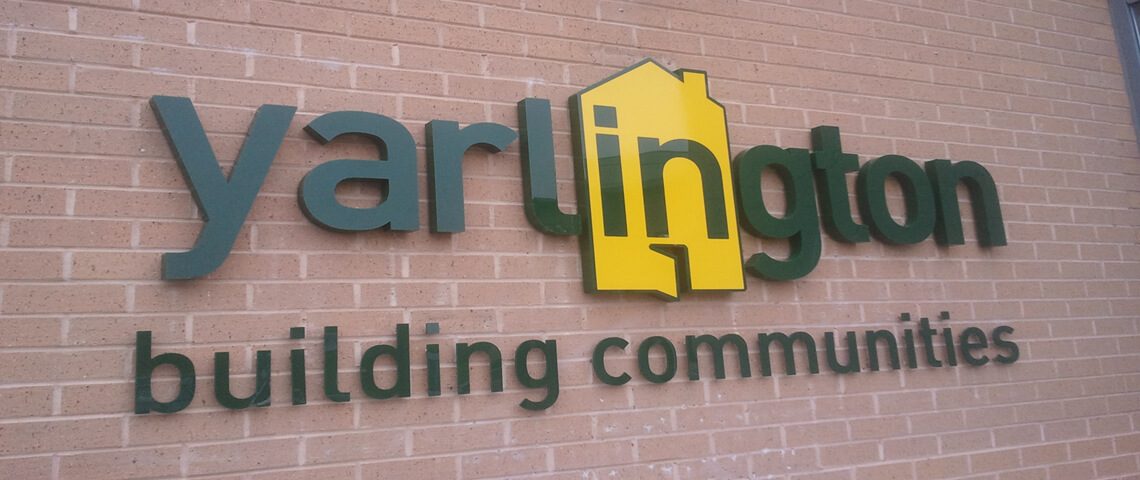
Image source: allplastics.com.au
Textured acrylic options open a realm of creative possibilities, allowing businesses to infuse a tactile dimension into their signage. From subtle patterns to bold textures, acrylic letters can be customized to convey a specific ambiance.
Whether aiming for a sleek and contemporary feel or a more organic and textured appearance, the variety of textured acrylic options ensures a tailored approach to signage customization.
3. Incorporating dimensional effects
The ability to incorporate dimensional effects adds a layer of sophistication to acrylic letter signage. Whether opting for raised letters, shadow effects, or embossed details, dimensional customization allows businesses to create signage that transcends the two-dimensional plane.
This nuanced approach enhances visibility and captures attention, making acrylic letters not just a means of communication but a visual experience.
How to make acrylic letter signs?
Step 1: acrylic letters design and planning
- Define your message: clearly identify the message or text that your sign will convey.
- Select font and style: choose a font and design style that aligns with your brand or message.
- Determine size and layout: decide on the overall size of the sign and arrange the letters in a visually appealing layout.
Step 2: material and tools
- Acrylic sheets: acquire acrylic sheets in the desired color, thickness, and finish for your sign.
- Cutting tools: depending on the style, gather tools such as a jigsaw, bandsaw, CNC machine, or laser cutter for cutting the acrylic.
- Adhesive: select an appropriate adhesive for bonding the letters together or attaching them to the sign surface.
- Masking tape: use masking tape to protect the acrylic surface during cutting and handling.
- Ruler, square, and level: ensure precision in measurements, alignments, and levelness with these tools.
Step 3: cutting acrylic letters
- Transfer design to acrylic: place the layout on the acrylic sheet and secure it with masking tape. Trace the letters onto the masking tape.
- Cutting: use a suitable cutting tool (jigsaw, bandsaw, CNC machine, or laser cutter) to cut along the traced lines.
- Smooth edges: sand the edges of the acrylic letters to achieve a smooth and polished finish.
Step 4: surface preparation
- Clean the surface: ensure the surface where the sign will be mounted is clean and smooth.
- Layout arrangement: arrange the acrylic letters on the sign surface to finalize the layout and spacing.
Step 5: adhering acrylic letters
- Apply adhesive: use an appropriate adhesive (like acrylic cement) to secure the letters together for 3D signs or onto the sign surface for flat signs.
- Press firmly: press each letter firmly, ensuring proper adhesion.
- Allow to cure: follow the adhesive manufacturer’s instructions for curing time.
Step 6: finishing touches
- Remove masking tape: if masking tape was used during cutting, carefully remove it to reveal the pristine acrylic surface.
- Cleaning: wipe down the entire sign to remove any dust or residue from the fabrication process.
- Inspect for imperfections: check for any imperfections, scratches, or uneven surfaces. Address and rectify as needed.
Step 7: mounting
- Select mounting method: choose a suitable method for mounting your sign. This could involve screws, standoffs, or other mounting hardware.
- Secure to the surface: drill holes or use the chosen mounting method to secure the sign in its intended location.
Step 8: lighting (optional)
- Consider backlighting: for channel letters or 3D signs, explore backlighting options for added visibility and aesthetic appeal.

Installation tips and best practices
Step 1: gather materials and tools
- Acrylic letters: ensure all letters are fabricated and ready for installation.
- Mounting template: if available, use a mounting template to guide the positioning of the letters.
- Mounting hardware: select appropriate hardware, such as screws, anchors, or standoffs, based on the mounting surface and style of letters.
- Level: use a level to ensure the letters are straight and aligned during installation.
- Power drill: for drilling holes if required.
- Masking tape: for marking and protecting surfaces during installation.
Step 2: determine placement
- Layout arrangement: arrange the letters on the intended surface to finalize the placement and spacing.
- Marking: use masking tape or other non-permanent markers to mark the positions of the letters on the surface.
Step 3: installation for flat acrylic letter signs
- Adhesive application: apply an appropriate adhesive to the back of each flat acrylic letter.
- Press firmly: press each letter firmly onto the marked positions on the surface.
- Leveling: use a level to ensure the letters are straight and level.
- Allow to cure: follow the adhesive manufacturer’s instructions for curing time.
Step 4: installation for 3D acrylic letter signs
- Attach studs or standoffs: if the letters have studs or standoffs, secure them to the back of each 3D acrylic letter.
- Drill holes: drill corresponding holes in the marked positions on the surface.
- Screw in letters: secure the 3D acrylic letters to the surface by screwing them into the pre-drilled holes.
- Leveling: use a level to ensure the letters are straight and level.
Step 5: installation for channel acrylic letter signs
- Position channels: place the channel letters on the marked positions.
- Secure with mounting hardware: use appropriate mounting hardware to secure the channels to the surface.
- Connect wiring (if applicable): for illuminated channel letters, connect the wiring according to the provided instructions.
- Leveling: use a level to ensure the channel letters are straight and level.
Step 6: final adjustments
- Review alignment: step back and review the overall alignment and spacing of the letters.
- Tighten hardware: ensure all screws, standoffs, or other hardware are securely tightened.
- Remove masking tape: if used for marking or protection, carefully remove masking tape.
- Clean surface: wipe down the entire sign and surrounding area to remove any installation residue.
Step 7: lighting test (if applicable)
- Turn on illumination: if the sign includes lighting, test the illumination to ensure all elements are functioning correctly.
Maintenance and care
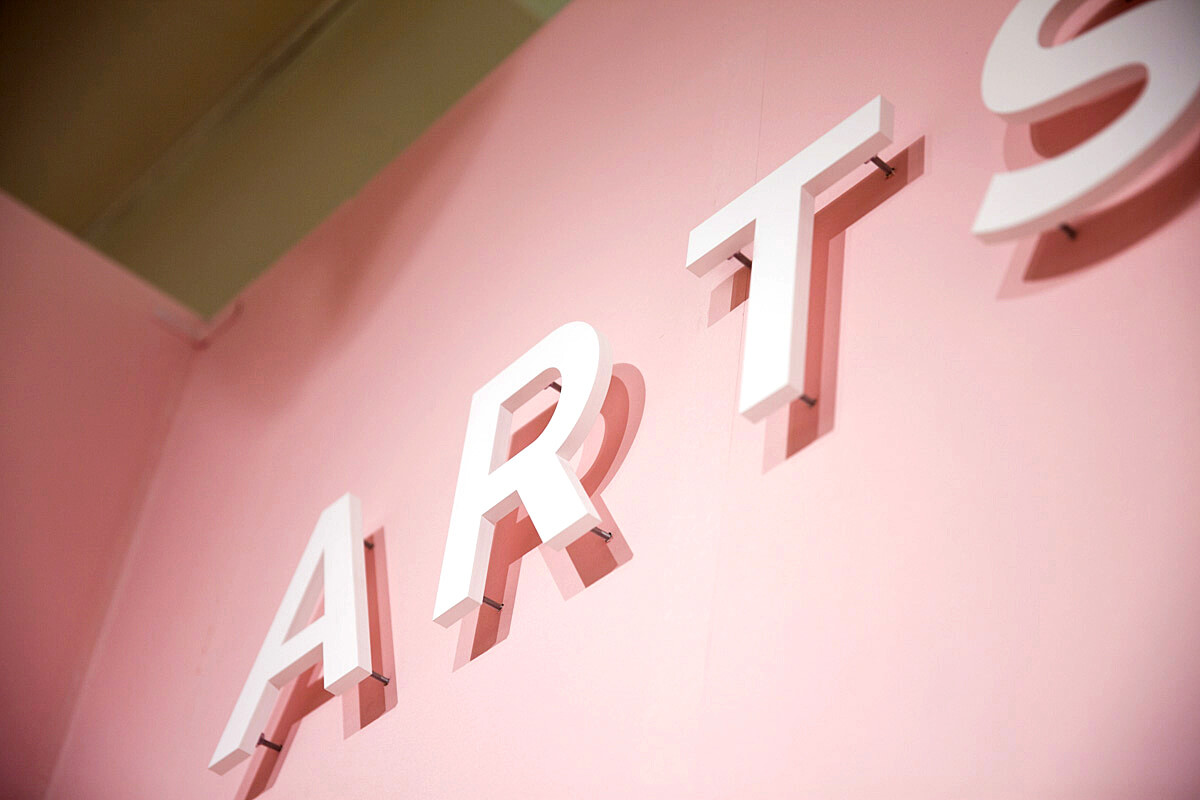
Image source: signkiosk.com
1. Regular cleaning
- Mild cleaning solution: clean the acrylic letters regularly using a mild soap and water solution. This helps remove dirt, dust, and any environmental residues.
- Soft cloth or sponge: use a soft, non-abrasive cloth or sponge to avoid scratching the acrylic surface.
- Gentle wiping: gently wipe the letters in a circular motion to prevent streaks and maintain a polished look.
2. Protection from harsh chemicals
- Avoid abrasive cleaners: do not use abrasive cleaners, harsh chemicals, or solvents, as they can damage the acrylic surface.
- Avoid scrubbing: refrain from using abrasive materials or scrubbing tools that may scratch or dull the acrylic.
3. Prevent scratches
- Handle with care: during cleaning and maintenance, handle acrylic letters with care to prevent scratches.
- Use microfiber cloths: microfiber cloths are effective in removing dust and fingerprints without scratching the surface.
4. Check for loose fasteners
- Regular inspections: periodically inspect the letters for any loose fasteners, especially for 3D or channel letters.
- Tighten as needed: if you find loose screws or standoffs, tighten them to ensure the letters remain securely attached.
5. Maintain illumination (if applicable)
- Check lighting elements: if the acrylic letters are illuminated, regularly check the lighting elements for functionality.
- Replace faulty bulbs: if using bulbs, replace any burnt-out or faulty ones promptly to maintain consistent illumination.
6. Weather protection
- Protect from extreme weather: if the sign is installed outdoors, consider protective coatings or covers to shield acrylic letters from harsh weather conditions.
- Seal exposed edges: for outdoor signs, ensure that exposed edges are properly sealed to prevent moisture infiltration.
7. Address damage promptly
- Inspect for damage: regularly inspect the sign for any signs of damage, cracks, or discoloration.
- Prompt repairs: address any damages promptly. For minor scratches, use acrylic scratch removers or polishes.
8. Follow manufacturer guidelines
- Refer to manufacturer guidelines: adhere to any specific care and maintenance guidelines provided by the manufacturer.
- Use recommended products: if the manufacturer recommends specific cleaning or maintenance products, use those for optimal results.
9. Protect against graffiti
- Anti-graffiti coating: consider applying anti-graffiti coatings to make it easier to remove any unwanted markings without damaging the acrylic.
10. Professional maintenance
- Schedule professional inspections: periodically schedule professional inspections to assess the overall condition of the sign, especially for large or complex installations.
- Professional cleaning: consider professional cleaning services for extensive signage that may be challenging to maintain regularly.
Acrylic letters: industry trends and innovations
1. Bold and oversized acrylic letters
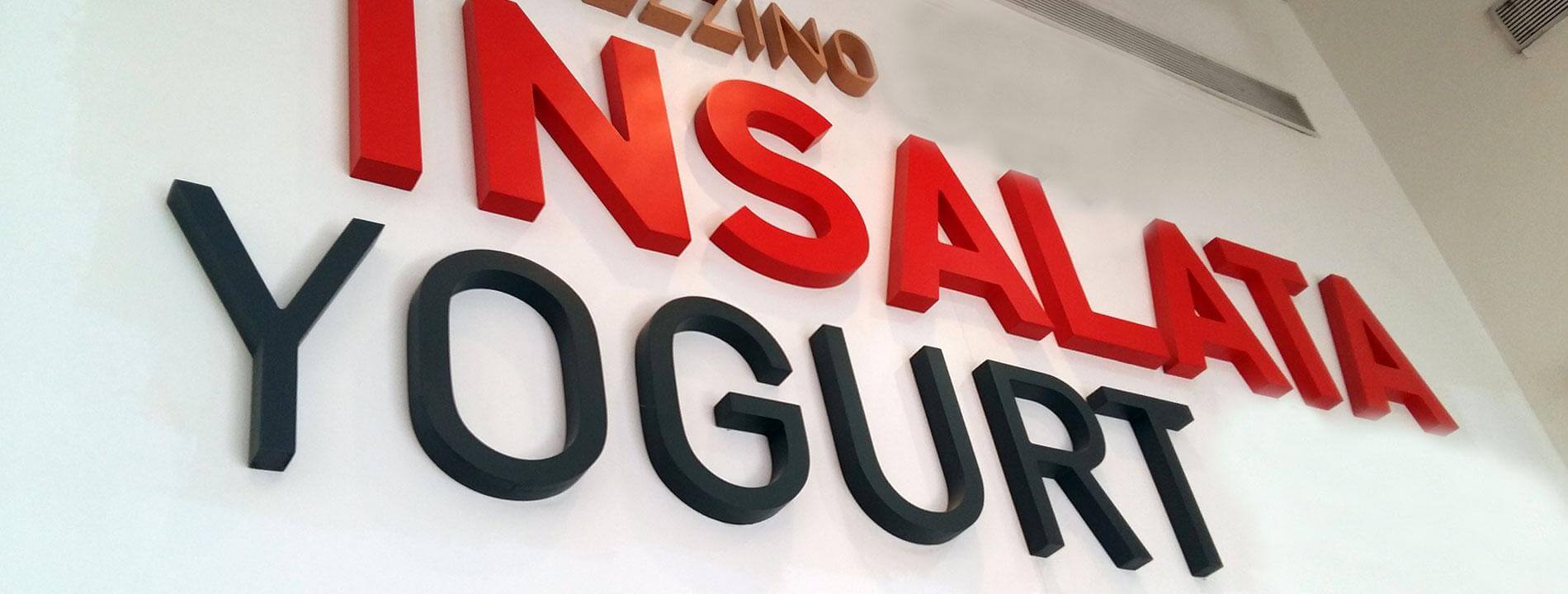
Image source: seizsigns.com
One notable trend is the increasing preference for bold and oversized acrylic letters, making a powerful visual impact. This trend aligns with the contemporary design ethos that emphasizes statement pieces in both indoor and outdoor settings.
2. Mixed material combinations
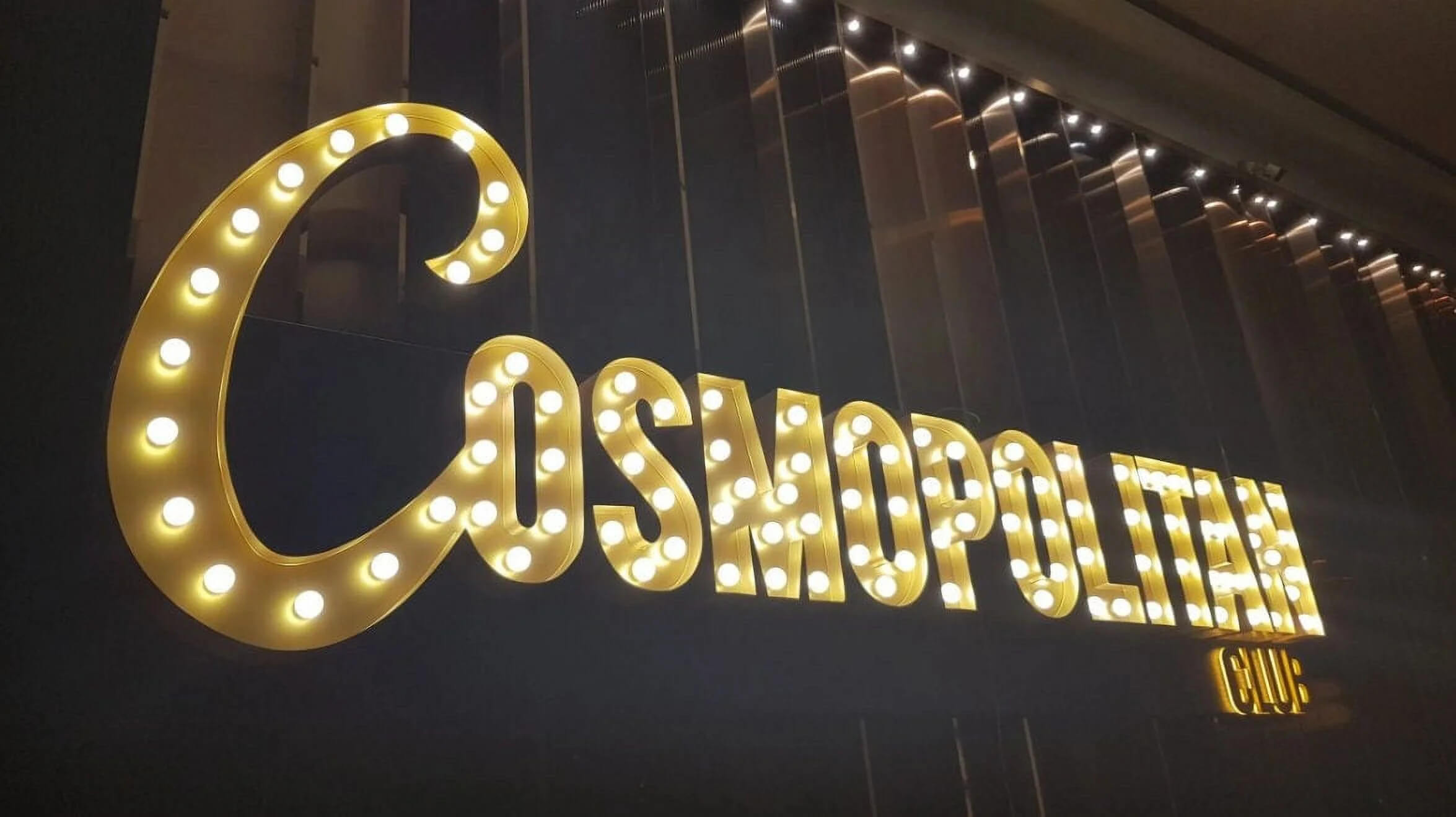
Image source: cleveridaho.com
Elevate your acrylic letter signs by embracing a fusion of materials. Combine acrylic with wood, metal, or glass for a multidimensional and visually captivating effect. The juxtaposition of materials adds depth and texture to your signage, creating a modern and sophisticated aesthetic.
3. Geometric and abstract designs
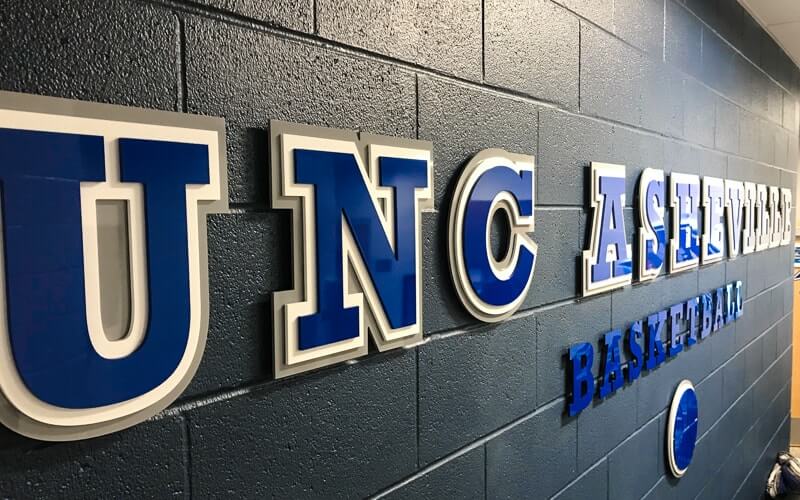
Image source: surreyshopsigns.co.uk
Explore the artistic side of acrylic letter signs with geometric and abstract designs. Play with shapes and patterns to create visually striking signage that stands out in its modern and avant-garde appeal.
4. Gradient and ombre effects
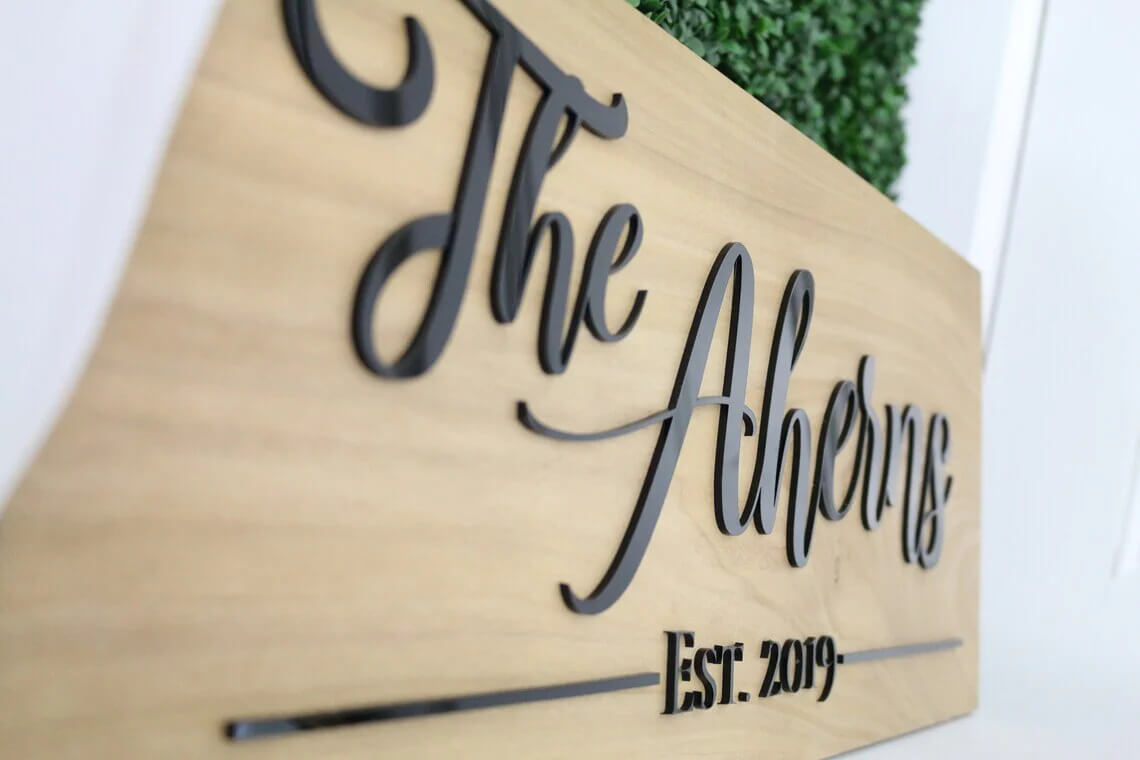
Image source: pinterest.com
Infuse a sense of modernity into your acrylic letter signs with gradient color schemes or ombre effects. These visually appealing transitions between colors add depth and sophistication to your signage, making it both trendy and aesthetically pleasing.
5. Floating or suspended letters
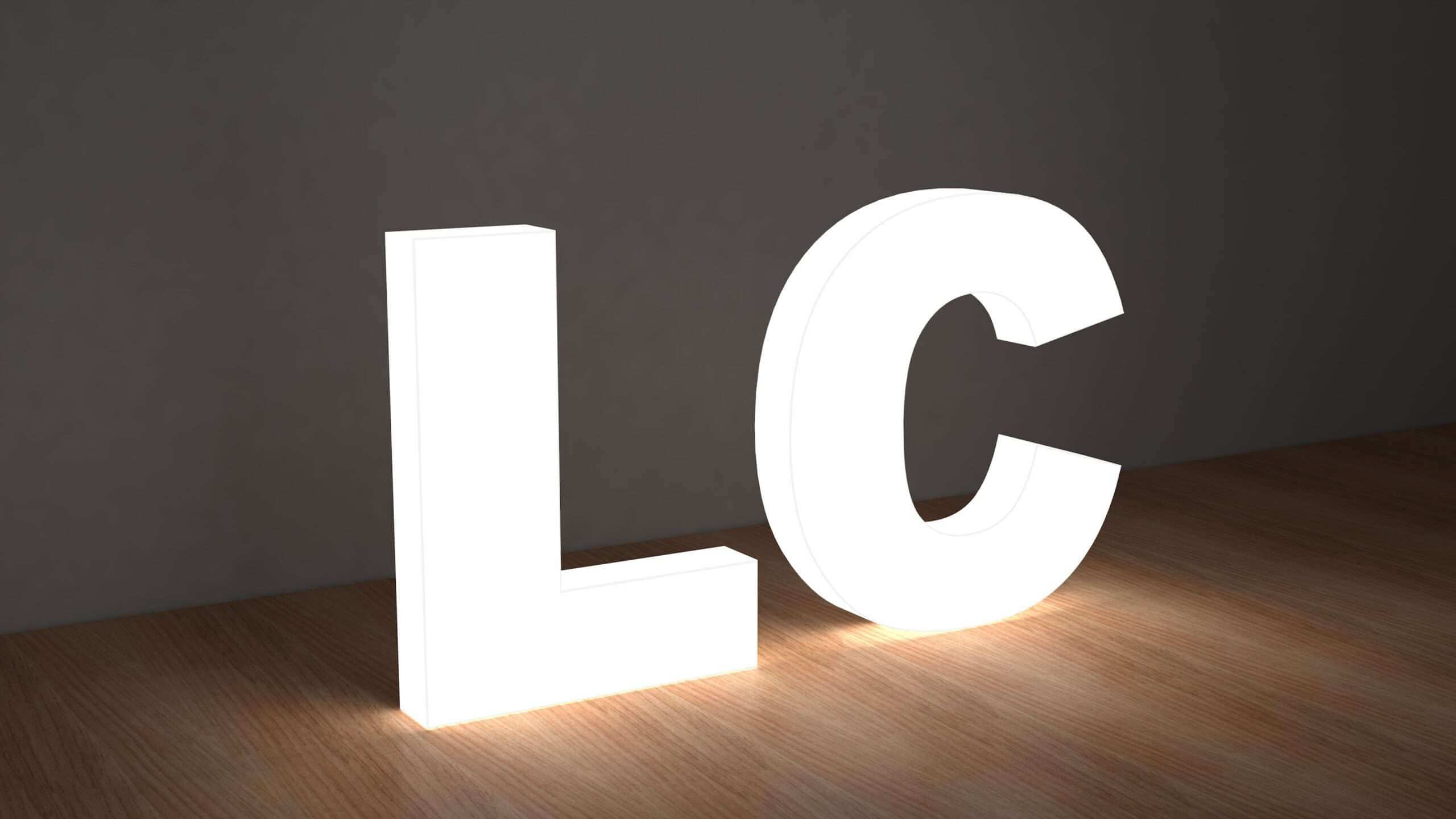
Image source: artsigns.com
Add an element of intrigue to your acrylic letter signs by creating the illusion of floating or suspended letters. This innovative design approach imparts a sense of whimsy and creativity, making your signage a memorable focal point.
6. Minimalistic and clean typography
Embrace the elegance of minimalism with clean and simple typography for your acrylic letter signs. Opt for timeless designs that prioritize clarity, allowing the beauty of the letters to shine through without unnecessary embellishments.
7. Retro and vintage styles
Take a nostalgic journey with acrylic letter signs inspired by retro and vintage aesthetics. Incorporate neon-inspired elements or typography reminiscent of specific eras to evoke a sense of nostalgia and capture the attention of those seeking a touch of the past.
8. Layered and stacked letters
Add depth and dimension to your acrylic letter signs by experimenting with stacked or layered letters. This design technique creates a three-dimensional effect, transforming your signage into a visually captivating and dynamic display.
9. Typography as art
Elevate your acrylic letter signs by treating typography as an art form. Embrace expressive fonts, creative layouts, and intricate details that transform your signage into a captivating piece of art, making a bold statement and leaving a lasting impression.
10. LED illumination with dynamic lighting
Embrace the future with acrylic letter signs featuring LED illumination. Create eye-catching displays with dynamic lighting effects, allowing for color changes, fades, and animated sequences. The energy efficiency of LEDs adds a sustainable and contemporary edge to your signage, capturing attention both day and night.
Frequently asked questions
What are the advantages of using acrylic letters for signs?
Acrylic letters offer durability, versatility, and a sleek appearance. They are lightweight, weather-resistant, and provide a modern aesthetic, making them an excellent choice for various sign applications.
Can acrylic letters be used for both indoor and outdoor signs?
Yes, acrylic letters are suitable for both indoor and outdoor signs. Their weather-resistant properties and resistance to UV rays make them ideal for exterior signage, while their polished look also complements indoor settings.
What customization options are available for acrylic letter signs?
Acrylic letters provide a wide range of customization options, including various colors, sizes, fonts, and finishes. Businesses can tailor their signs to match branding requirements and achieve a distinctive visual impact.
How do acrylic letters compare to other sign materials in terms of cost?
While acrylic letters may have a slightly higher upfront cost, their durability and low maintenance can lead to cost savings over time. Compared to some alternatives, acrylic letters often offer a cost-effective and long-lasting signage solution.
What maintenance is required for acrylic letter signs?
Maintaining acrylic letter signs is relatively easy. Regular cleaning with mild soap and water helps preserve their appearance, and their resistance to fading and yellowing minimizes the need for extensive upkeep.
Can acrylic letters be illuminated, and what lighting options are available?
Acrylic letters can be illuminated to enhance visibility. LED lighting is a popular choice, providing energy efficiency and a variety of color options. Backlit and halo-lit options create eye-catching effects.
What is the production time for custom acrylic letter signs?
The production time for custom acrylic letter signs varies depending on complexity and order volume. Generally, it ranges from a few days to a couple of weeks, ensuring a timely delivery for businesses.
Are acrylic letters suitable for both small businesses and large corporations?
Acrylic letters cater to businesses of all sizes. Their customizable nature allows small businesses to create affordable yet impactful signage, while large corporations can maintain a consistent and professional brand image across various locations.
Can I make custom logos and fonts with acrylic sign letters?
Yes, acrylic letters can be used to craft custom logos and fonts. Their versatility in shape and size, along with the ability to cut and mold acrylic precisely, enables the creation of unique and eye-catching designs for logos and fonts.
